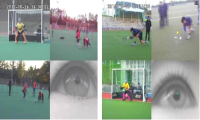PURPOSE This study examined how consumers' visual attention to ads during eSports media consumption varies over time. METHODS An experimental study with a single factor, three-level within subject experimental design was conducted, utilizing an eye-tracker to measure visual attentions, including fixation count and duration. Seventy-eight students from a national university in city B participated in the experiment. A repeated measures ANOVA was conducted using the open-source statistical program R to test the research hypothesis. RESULTS Both the fixation count and duration were highest for the first ad and then gradually decreased for the second and third ad. CONCLUSIONS It is recommended that eSports sponsors should consider differentiating ad pricing based on the order of exposure, then expose the first ad presented more frequently and for extended periods, and consider different shapes, colors, and movements to prevent adaptation to the initial allocation of attention.
PURPOSE This study investigated differences in gaze entropy according to skill level and temporal occlusion in table tennis serve reception. METHODS Study participants were divided into a skilled group (n = 6) and a novice group (n = 6). The study task involved sitting in front of a monitor while wearing an eye tracker, watching 36 serve videos, and predicting whether the ball’s length would be short or long by pressing the "Top" (short serve) or "Bottom" (long serve) pad on the selection response pad. RESULTS Overall, the later the temporal occlusion level, the faster the reaction time and the higher the judgment accuracy. At temporal occlusion levels 2 and 3, skilled participants showed higher judgment accuracy than novices. Analysis of heatmap and gaze entropy revealed that novices exhibited visual search toward the ball across all temporal occlusion levels (T1, T2, T3) and had high gaze entropy. In contrast, skilled participants generally showed visual search to the racket area depending on the temporal occlusion level, with low gaze entropy at T1 and T2, and a tendency for increased gaze entropy at T3. CONCLUSIONS Compared to novices, skilled participants had lower gaze entropy and fixated more on the racket area when predicting table tennis serves. Similarly, novices focused more on the ball than on the racket. The study also proposed the value of using heatmap and Shannon entropy for this type of analysis.

Purpose The purpose of this study was to establish the differences of anticipating accuracy and confidence according to fencing expertise and spatial occlusion region. Methods For the purpose of this study, the anticipation ability of 6 high-level fencing players and 6 low-level fencing players were analyzed. All subjects performed the 60 tasks of anticipating the attack positions(thorax, thigh, toe) from observing the fencing video screen using spatial occlusion technique. The spatial occlusion technique was used in 6 particular body of opponent’s movement. For statistic analysis, data was analyzed through independent T-test measure. Moreover, Paired t-test were used as follow-up analysis. Results The results of the study were as follows: In terms of accuracy anticipation, the main effect of expertise was significantly different. Specifically, when the spatial occlusion technique was applied in head, left leg, arm, and a foil, the accuracy of anticipation was significantly different. Moreover, comparing with no-occlusion condition, anticipation accuracy decreased when spatial occlusion technique was applied in arm and foil. In terms of confidence, there was no significant difference between level of expertise. Conclusions In order to effectively anticipate the opponent’s movement in fencing sports, it is necessary to focus on the visual cues of arm/shoulder, and the foil. Especially, focusing on the foil movement might provide the core informations on anticipation ability.

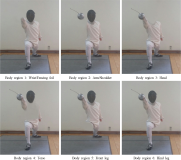
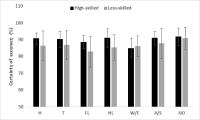

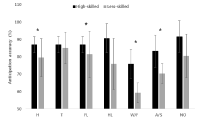
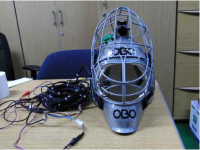
The purpose of this study is to establish the efficient defensive strategy from analyzing the goalkeeper’s gaze behavior and defensive motion in both field hokey penalty corner and penalty stroke. To achieve this goal, 3 national team goalkeepers’ gaze behavior and defensive motions were analyzed, as well as the player’s visual strategies from their interview contents. For the apparatus, multi-channel integrational system were used for analyzing goalkeeper’s reaction movement and personal visual strategies. The result is as follow: First of all, In the penalty stroke, goalkeepers were tended to focus on the bottom of the shooter’s hokey stick. Second, national hokey players had quicker anticipating saccadic movement. For this reason, their visual fixation locations were arrived in targets earlier than the hockey ball. Lastly, in the interview contents, they were reported to focus just on the ball from not disturbed by other various objects(body, hockey stick). However, they actually observed various body parts of shooters. These results imply that we need to develop an effective perceptual skill training in order to anticipate the shooting performance more accurately and rapidly. These types of perceptual and cognitive skill training should be conducted with information on knowing their specific visual cues in anticipating shooting direction.

